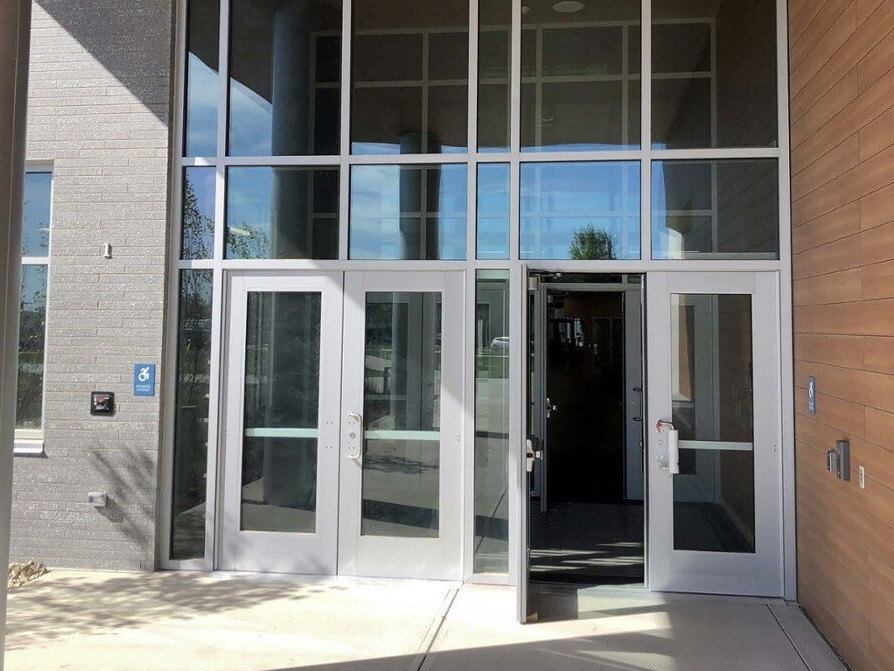Can you go green and still use bullet proof glass? Over the last decade the US Federal government–and especially the Department of Defense–have embraced environmentally sustainable design and construction at all levels, adopting the LEED (Leadership in Energy and Environmental Design) standards. All the while, Washington has insisted that the decision is pragmatic–not political–and doesn’t compromise on safety.
Bullet Proof Glass, The DoD, and LEED
According to Terry Yonkers, Assistant Secretary of the Air Force for Installations, Energy, and Environment: “These are business decisions, and this is a business case. We’re building to LEED Silver because it saves energy and it saves money. . . . It all adds up to overall energy security on our installations and the reduced cost of doing business–that’s really the focus. It’s a pragmatic, practical approach to energy security, economic security, and diversifying our portfolio.”
But congressional testimony collected over the
summer had many wondering if you can go green and still use bullet proof glass.

Is Bullet Resistant Glass Green Enough
The July 19 meeting of the House Committee on Oversight and Government Reform was titled “Continuing Oversight of Regulatory Impediments to Job Creation: Job Creators Still Buried by Red Tape.” The committee, chaired by Congressman Darrell Issa, sought to gather testimony concerning how federal regulations interfere with job creation. One of the regulatory frameworks examined during this meeting was LEED certification, including the latest revision of these standards (at one time called “LEED 2012,” this standard–which is still in flux–is now called “LEED v4”).
During his testimony Steve Russel, the vice president of the Plastics Division of the American Chemistry Council, explained that, among other issues, proposed revisions to LEED would hamper the federal government’s ability to use bullet proof glass:
“This credit would also restrict the ability of the federal government to use shatter-resistant polycarbonate glass, such as this example here [Russel shows a square of bullet resistant glass], which is essential in protecting buildings such as courthouses, government institutions, and prisons from bullets. As you can see, a bullet has been shot and remains impregnated in the unshattered glass. Because credits such as these are not adequately justified by science or data, GSA should not recommend LEED for federal buildings if these or similar credits remain.“
Does Leed Outlaw Bullet Resistant Glass?
Short answer: No. LEED–both the existing standard and the v4 draft–doesn’t outlaw anything. It’s a point system (the points are referred to as “credits”); any building (either new construction or renovation) can earn up to 110 possible credits for incorporating materials or design elements that are known to increase efficiency or limit the negative environmental impact of building construction or operation. Buildings that earn at least 40 credits are “LEED certified.” Those that earn at least 50 points are “LEED Silver”; above 60 are “LEED Gold,” and 80 or more credits is “LEED Platinum.”
Under the proposed LEED v4 standard, a revision to the “Avoidance of Chemicals of Concern” credit would have advised avoiding polycarbonate–including polycarbonate-based bullet resistant glass. Polycarbonate is manufactured using bisphenol-A (aka BPA), a suspected endocrine disruptor. Scientific consensus increasingly leans toward limiting human exposure to BPA and other endocrine disruptors.
This revision to the chemical avoidance credit has not been integrated into the LEED standard. Even if it was, it would not “ban” bullet proof glass, or even bullet proof polycarbonate, it would just mean that architects would need to balance the “cost” of using a less desirable material with credits in some other aspect of the building design–something that LEED-certified architects are adapt at doing. With 110 possible credits–and only 50 needed to qualify for DoD-approved LEED Silver certification–missing one or two credits is far from the end of the world.
Insulating Exterior Windows with Bullet Proof Glass
As it turns out–“endocrine disruption” notwithstanding–polycarbonate blast- and bullet resistant glass can actually be used to earn LEED credits. The LEED standards are weighted to favor energy efficiency. Polycarbonate-based ballistic glass has good transparency and an excellent “R-value” (used to rate a building material’s capacity for heat retention). Reinforcing or replacing large exterior windows with ballistic polycarbonate (which is almost mandatory in government buildings in need of Level 8 ballistic security, such as the White House) increases access to natural light while lowering heat expenditures–both of which earn LEED credits. These improvements can easily wipe out any credits using an “environmentally undesirable” material might “cost” a building.

